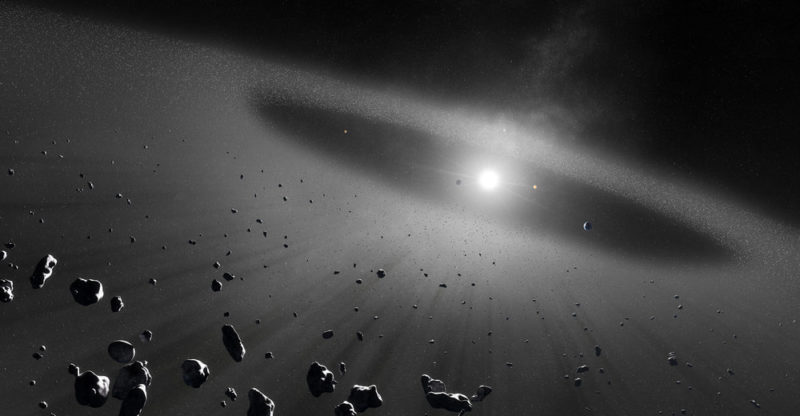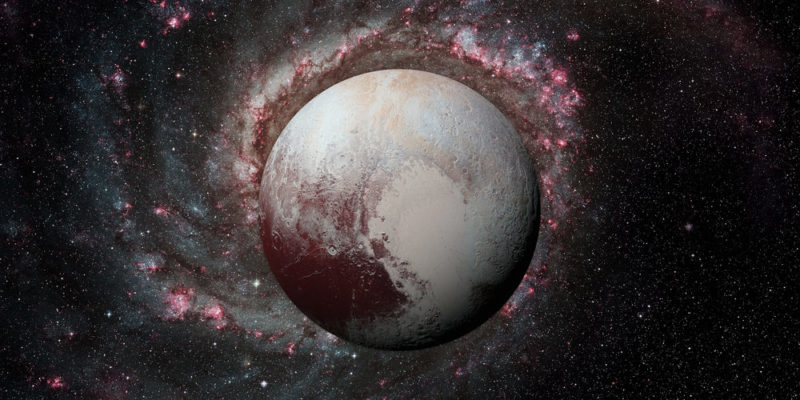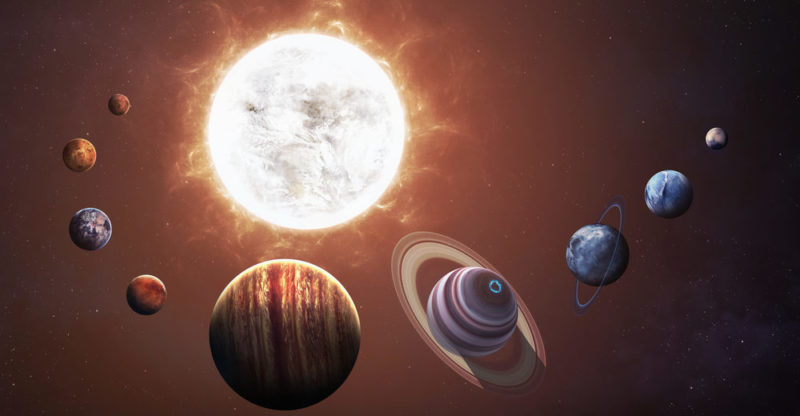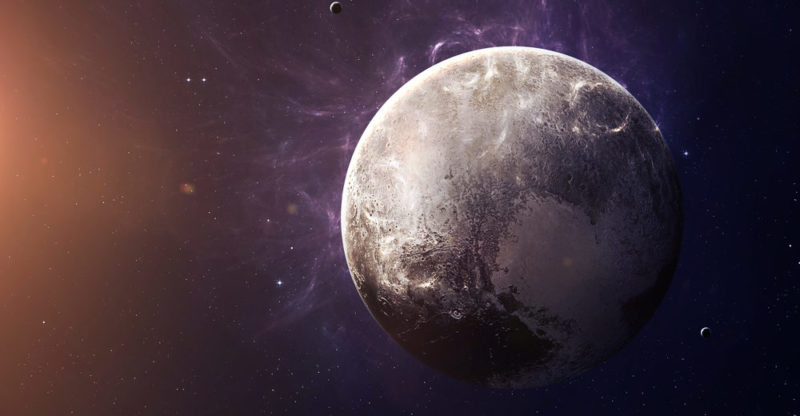We explain what Pluto is, how it was discovered and the type of orbit it has. Also, what are its characteristics and satellites.
It differs from the planets, because they have also cleaned the areas near their orbit of objects of similar size. By contrast, near Pluto's orbit there are numerous objects of slightly smaller sizes.
Between 1930 and 1992 Pluto was considered one more planet in the Solar System . However, in 1992 numerous celestial bodies were discovered that were in the same region belonging, like Pluto, to the Kuiper belt.
After more than a decade of controversy, in 2006 the IAU redefined the concepts of planet and dwarf planet , including Pluto among the latter.
Discovery of Pluto

With the technology available to observatories in the 19th century, Pluto was not yet visible . However, astronomers knew that each planet's orbit is affected by the presence of other nearby planets in the same system.
Scientists had already discovered Neptune (eighth planet in the Solar System ) despite not being able to observe it, due to the way Neptune perturbed the orbit of Uranus (seventh planet in the Solar System).
However, at the end of the 19th century they discovered that the disturbances in the orbit of Uranus were due to the presence of another planet, in addition to Neptune.
With the theoretical hypothesis of its existence, the search for the ninth planet began and its discovery was reached on March 13, 1930 at the Lowell Observatory.
Pluto name
All the planets are named after gods from Ancient Rome . Although it was the ancient Greeks who discovered the planets, the Romans gave new names to their gods and thus to the planets.
This is why the planets that were discovered in the 19th and 20th century also got names of Roman deities. In Roman mythology, Pluto is the god of the underworld .
The name was chosen by members of the Lowell Observatory, who selected it from among other Latin names , and it became the official name of the planet on May 1, 1930.
Origin of Pluto

Beginning in the 1990s, scientists began to suspect that Pluto might be an ancient satellite of Neptune , but later discovered more Pluto-like objects close to its orbit.
This is how Pluto was discovered to belong to the Kuiper belt . It is a disk made up of gas , dust, rocky objects, ice, and dwarf planets or planetesimals. Of all of them, Pluto is the largest object, so it could be discovered before the belt.
All of these objects form a disk around the sun that rotates in its own orbit . Its name is in honor of Gerard Kuiper, who theoretically calculated its existence in 1951.
Pluto's orbit
Pluto's translation period, that is, the time it takes to travel its orbit around the sun, is 248 Earth years . It is not a circle but forms an ellipse, that is, an elongated circle, and the Sun is not in the center but closer to one of the ends of the ellipse.
This type of orbit is called eccentric . The eccentricity of the orbit is such that it intersects with the orbit of Neptune. Therefore, between 1979 and 1999, Neptune was the furthest planet from the Sun.
This unusual orbit allows Pluto's distance from the Sun to vary between 30 and 50 au (1 au is equal to the distance from the Earth to the Sun).
Pluto Rotation

Pluto's rotation period, that is, the time it takes to rotate on itself, is 6.38721 Earth days . Pluto has a satellite called Charon, which has a translation period equal to Pluto's rotation period.
Pluto size
At its equator (its greatest circumference) Pluto is 2,300 km in diameter , which is equivalent to 18% of the Earth's diameter. On the other hand, its mass is only 0.0022% of the mass of the Earth, that is, it is much less dense than our planet.
Pluto's atmosphere
An atmosphere is the layer of gases that surrounds a celestial body because of its gravity. In Pluto's case, it is composed primarily of nitrogen and lesser amounts of methane and carbon monoxide .
However, this atmosphere is not permanent , but appears when Pluto is closest to the Sun, since it partially melts the ice on the surface and the gases are released from them.
Pluto Gravity

Gravity is an acceleration and, in the case of Pluto, it is 0.62 m/s² , which is even less than the gravity of the Moon ( 1.622 m/s²). On Pluto's surface, gravity is 4.1% of Earth's gravity (Earth's gravity is 9.807).
Due to the weak force of gravity and the weakness of its atmosphere, the escape velocity is 10 times less than the earth . Escape velocity is the minimum speed an object must take to escape gravitational pull. In the case of Pluto it is 1.1 km/s and that of the Earth is 11.2 km/s.
Pluto exploration
During NASA's New Horizons mission, a space probe began taking pictures of Pluto and its moons in July 2015. On July 13, it reached 768 thousand kilometers from the surface and was able to photograph it, obtaining information about its relief .
Pluto's satellites

Satellites are celestial bodies that draw an orbit around another larger one, for example, the Moon around the Earth. Pluto's satellites are:
- Charon. Discovered in 1978, it is half the diameter of Pluto and about the same mass, making it a double planet.
- Nyx and Hydra. Both satellites were discovered in 2005 by the Hubble Space Telescope.
- Cerberus and Styx. The Hubble telescope also discovered in 2011 these satellites that orbit around the system made up of Charon and Pluto.
Passionate about understanding and contributing to a world that does not stop changing. New forms of Work, Sustainability and Technology. For many years he has worked as a creative for large international companies. He has a Ph.D. in information technology and he has been doing quantitative research in the interdisciplinary areas of information systems, cyber security, data analytics and artificial intelligence. He continue to look for creative solutions through technology to help companies to be more humane and sustainable..
Leave a reply
Your email address will not be published. Required fields are marked *Recent post

Sport: What Is It, Types, Risks, Features, Characteristics and Examples

Dogs: Emergence, Features, Characteristics, Feeding and Breeds

Story: Definition, Elements, Structure, Features and Characteristics

